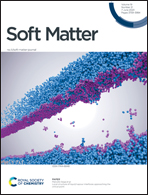Abstract
Cooperative protein–protein and protein–DNA interactions form programmable complex assemblies, often performing non-linear gene regulatory operations involved in signal transductions and cell fate determination. The apparent structure of those complex assemblies is very similar, but their functional response strongly depends on the topology of the protein–DNA interaction networks. Here, we demonstrate how the coordinated self-assembly creates gene regulatory network motifs that corroborate the existence of a precise functional response at the molecular level using thermodynamic and dynamic analyses. Our theoretical and Monte Carlo simulations show that a complex network of interactions can form a decision-making loop, such as feedback and feed-forward circuits, only by a few molecular mechanisms. We characterize each possible network of interactions by systematic variations of free energy parameters associated with the binding among biomolecules and DNA looping. We also find that the higher-order networks exhibit alternative steady states from the stochastic dynamics of each network. We capture this signature by calculating stochastic potentials and attributing their multi-stability features. We validate our findings against the Gal promoter system in yeast cells. Overall, we show that the network topology is vital in phenotype diversity in regulatory circuits.



 Please wait while we load your content...
Please wait while we load your content...